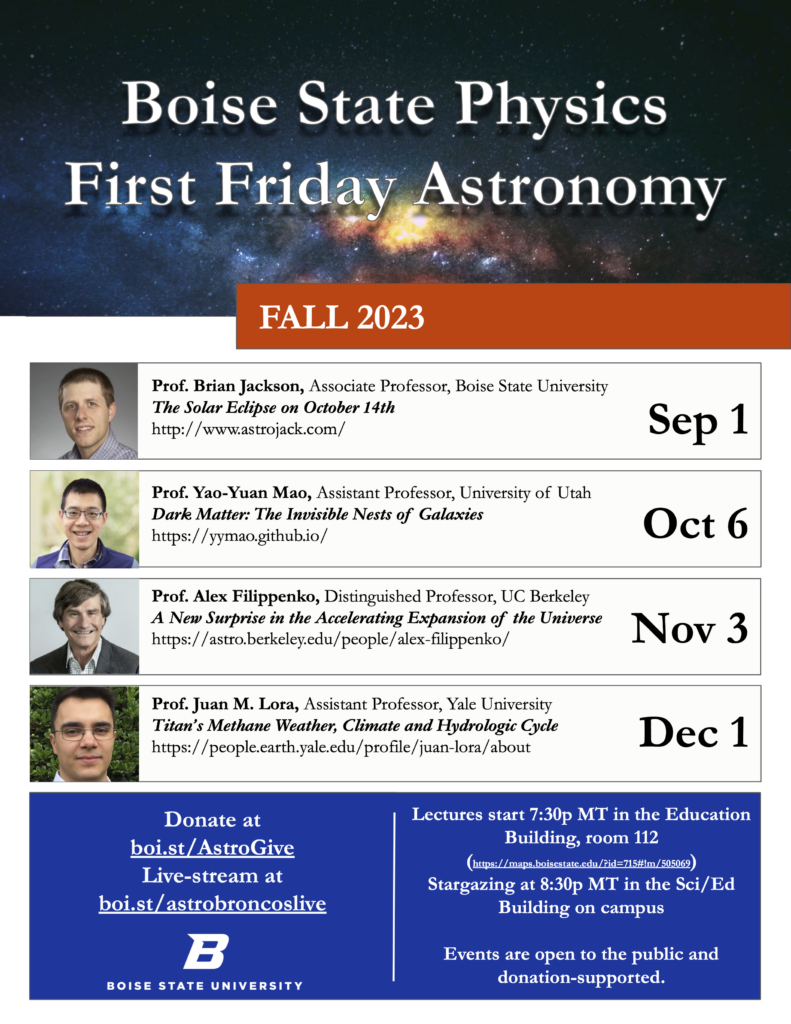
Boise State Physics will host Prof. Yao-Yuan Mao of University of Utah on Friday, Oct 6 for our First Friday Astronomy lecture. Prof. Mao will talk about his work on low-mass galaxies and dark matter, and if the weather permits, we’ll stargaze on Boise State’s Quad after the lecture. In the meantime, let’s explore some of the most common questions people have about dark matter.
What is dark matter?
No one knows! Hints of dark matter started to appear in astronomical observations in the 1920s, but its existence wasn’t firmly established until the 1960s and 70s. Suggestions about what dark matter might be made of range from miniature black holes, brown dwarfs, or some strange kind of sub-atomic particle. But in spite of decades of work, astronomers haven’t been able to figure out what dark matter is made of.
So if no one knows what dark matter is, why do astronomers even think it exists?
So far as we can tell, dark matter does not emit any form of radiation. Normal matter with a temperature above absolute zero (which is all normal matter) emits some kind of light, infrared, radio waves, visible light, etc. Dark matter doesn’t do that for some reason.
But astronomers can see the gravitational influence of dark matter. Dark matter in galaxies causes stars to revolve more quickly around the galaxy than they would if only light-emitting, normal matter were present. In fact, that was how the presence of dark matter was actually established. Dark matter also causes light to curve, producing dark matter Einstein rings (they’re called “Einstein rings” because Einstein’s theory of general relativity predicts how they should look). Astronomers can actually use those rings to determine the amount of dark matter in a region of space.
How much dark matter is out there?
A lot. Even though we don’t know what dark matter is, it turns out to make up almost 30% of the total matter in the Universe!
Why do we care about dark matter?
Because it makes up so much of the Universe, dark matter’s gravitational influence is enormous. Dark matter also played a crucial role in the earliest phases of the Universe’s evolution, right after the Big Bang (although dark matter’s confining gravitational influence is counteracted by the outward pressure of dark energy – but that’s a story for another time).
